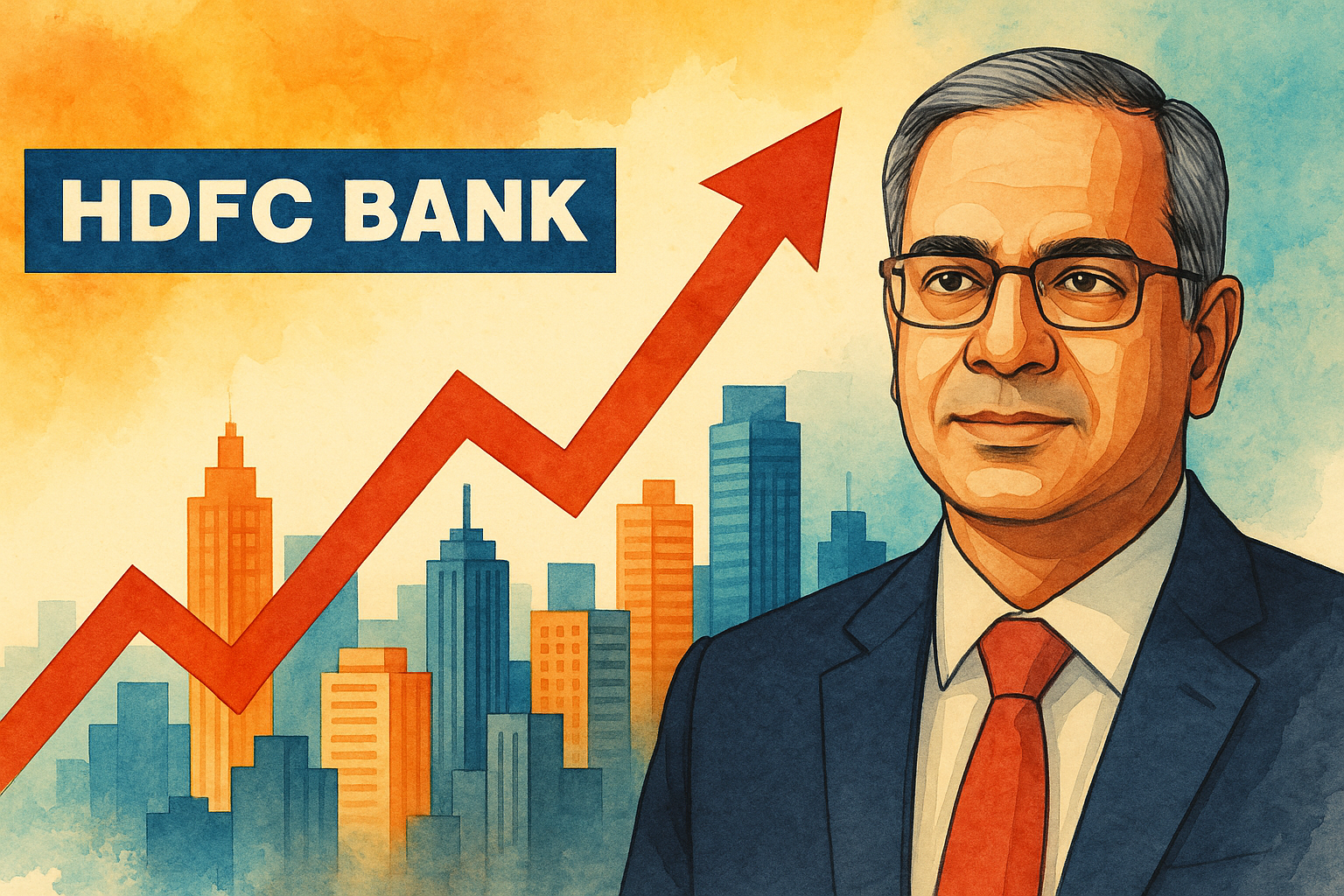HDFC Bank, India’s largest private sector lender, is setting the stage for a robust credit expansion over the next two years, buoyed by improving consumer sentiment, government-led stimulus measures, and digital transformation. Managing Director and Chief Executive Officer Sashidhar Jagdishan expressed optimism during the bank’s September-quarter earnings call, highlighting how a confluence of favorable economic factors could usher in a new phase of loan growth.
The Economic Tailwinds: Tax, GST, and Rate Cuts
With inflation gradually cooling and the Reserve Bank of India (RBI) expected to ease interest rates, HDFC Bank sees fertile ground for lending. Recent GST reductions and tax reliefs are putting more disposable income in consumers’ hands, while potential rate cuts are expected to lower borrowing costs across sectors.
Jagdishan described this as a “triad of tax benefits, GST cuts, and interest rate reductions” that’s beginning to fuel real economic activity. “We’re witnessing visible improvements across customer and product segments. This gives us the opportunity to accelerate loan growth, which has already begun this quarter,” he noted.
Rebalancing Post-Merger and Returning to Growth
Following its merger with Housing Development Finance Corporation Ltd (HDFC Ltd), the bank deliberately moderated lending to bring its credit-deposit ratio down from 110% to below 97%. That consolidation phase is now behind it.
Chief Financial Officer Srinivasan Vaidyanathan confirmed that HDFC Bank aims to grow in line with the banking system in FY26 and faster than the system in FY27, signaling a strategic move to recapture lost market share.
For the September quarter, gross advances surged nearly 10% year-on-year to ₹27.69 trillion, while deposits rose over 15% to ₹27.1 trillion. These numbers outpaced system-wide averages, where non-food credit grew 10% and deposits rose 9.5% as per RBI data.
Revival in Corporate Credit and Strategic Lending
While retail lending continues to be a key growth driver, the bank is also witnessing renewed momentum in corporate credit. Wholesale advances increased 4.7% sequentially and 6.4% year-on-year to ₹7.41 trillion. This rebound follows a subdued June quarter marked by rising bond yields and weaker corporate borrowing.
The lender has selectively participated in working-capital financing, maintaining “reasonable and good spreads.” Furthermore, the management views RBI’s new allowance for acquisition financing as a major opportunity. Jagdishan described it as a “win-win” for both banks and customers, potentially reducing transaction costs and expanding service offerings.
Financial Strength and Key Performance Indicators
For the quarter ended September, HDFC Bank’s standalone net profit grew 11% year-on-year to ₹18,640 crore, supported by healthy credit expansion and stable asset quality.
- Net Interest Income (NII): ₹31,600 crore (up 5% YoY)
- Net Interest Margin (NIM): 3.27% (slightly lower than 3.35% last quarter)
- Gross NPA: Improved to 1.24% from 1.40%
- Net NPA: Improved to 0.42% from 0.50%
- Credit Cost Ratio: 0.51%
- Capital Adequacy Ratio: 20%
Vaidyanathan highlighted that 70% of the bank’s loans are floating-rate, meaning much of the benefit from the RBI’s 100-basis-point rate cut has already been transmitted. As deposit costs typically take six quarters to adjust, the bank expects further margin stability, supported by an 18-basis-point drop in funding costs.
Technology and Transformation: Building the Future Bank
HDFC Bank is betting big on technology-driven efficiencies to sustain long-term growth. Jagdishan revealed that the bank is running “lighthouse experiments” leveraging generative AI and automation to streamline operations, cut turnaround times, and elevate customer experience.
A dedicated emerging technology factory is being set up to scale AI-driven solutions across business lines, with tangible benefits expected within 18–24 months. Importantly, the bank has clarified that this transformation will not result in job losses — rather, it will reshape roles, moving employees from back-end processes to customer engagement and tech-focused functions.
“AI is not going to reduce people; it’s going to shift talent to areas that drive customer and technology value,” Jagdishan said.
Takeaways: Poised for a Credit Upswing
HDFC Bank’s current strategy blends financial discipline with digital ambition. With the economy strengthening, inflation easing, and fiscal measures supporting consumption, the bank is positioned to accelerate lending in both retail and corporate segments. Its robust capital base and commitment to technological innovation provide a strong foundation for this next phase of growth.
As India’s financial landscape evolves, HDFC Bank seems ready to lead the charge — not just as a lender, but as a technology-powered ecosystem redefining the future of banking.
Feel free to share your experiences and insights in the comments below. Let’s continue the conversation and grow together as a community of traders and analysts.
By sharing this experience and insights, I hope to contribute to the collective knowledge of our professional community, encouraging a culture of strategic thinking and informed decision-making.
As always, thorough research and risk management are crucial. The dynamic nature of financial markets demands vigilance, agility, and a deep understanding of the tools at your disposal. Here’s to profitable trading and navigating the election season with confidence!
Ready to stay ahead of market trends and make informed investment decisions? Follow our page for more insights and updates on the latest in the financial world!
For a free online stock market training by Yogeshwar Vashishtha (M.Tech IIT) this Saturday from 11 am – 1 pm, please sign up with https://pathfinderstrainings.in/training/freetrainings.aspx
Experience profits with my winning algo strategies – get a free one-month trial with ₹15 lakh capital! – https://terminal.algofinders.com/algo-terminal
Disclaimer
This article should not be interpreted as investment advice. For any investment decisions, consult a reputable financial advisor. The author and publisher are not responsible for any losses incurred by investors or traders based on the information provided.


